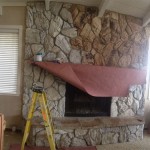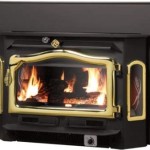How to Install a Wood Stove in a Fireplace
Installing a wood stove within an existing fireplace can be an efficient way to supplement home heating, adding warmth and aesthetic appeal. However, this project requires careful planning, adherence to safety regulations, and a thorough understanding of the necessary steps. This article provides a comprehensive guide to installing a wood stove in a fireplace, covering essential considerations and procedures.
Assessing Fireplace Suitability and Local Regulations
Before commencing any installation, it is crucial to evaluate the fireplace's suitability. The fireplace must be structurally sound and large enough to accommodate the wood stove. Consider the dimensions of the stove and ensure there is adequate clearance from combustible materials, such as walls and mantels. Consult the wood stove manufacturer's specifications for minimum clearance requirements. These specifications are crucial for preventing potential fire hazards.
Local building codes and regulations governing wood stove installations must also be adhered to. Contact the local building department to obtain the necessary permits and understand specific requirements related to chimney liners, clearances, and emissions. Failure to comply with these regulations can result in fines or mandatory removal of the installation. Different jurisdictions may have varying standards, so thorough research is essential before beginning the project.
Additionally, insurance companies may have specific requirements for wood stove installations. Contact your homeowner's insurance provider to determine if the installation will affect your policy. They may require inspections or adherence to specific safety standards to maintain coverage.
Preparing the Fireplace and Chimney
The preparation phase involves several critical steps to ensure the safe and effective operation of the wood stove. The first step is to thoroughly clean the existing fireplace and chimney. Remove any soot, creosote, and debris that may have accumulated over time. A chimney sweep can perform this task professionally, ensuring a clean and safe chimney passage.
Inspect the fireplace and chimney for any signs of damage, such as cracks or crumbling mortar. Repair any damage before proceeding with the installation. A damaged chimney can compromise its structural integrity and increase the risk of fire. If significant damage is present, consider consulting with a qualified mason for professional repairs.
Installing a chimney liner is often a necessary step when installing a wood stove in a fireplace. The liner provides a continuous, sealed flue from the stove to the top of the chimney, preventing the escape of harmful gases and improving the stove's efficiency. Select a chimney liner that is specifically designed for wood stoves and is of the appropriate size for the stove's flue outlet. Common liner materials include stainless steel and aluminum, with stainless steel being the preferred option for its durability and resistance to corrosion.
The installation of the chimney liner typically involves lowering it down the chimney from the top, connecting it to the stove's flue outlet, and securing it in place. Follow the manufacturer's instructions for the specific liner being used. Proper installation of the chimney liner is crucial for the safe and efficient operation of the wood stove.
Installing the Wood Stove and Connecting the Flue
Once the fireplace and chimney are properly prepared, the next step is to install the wood stove itself. Carefully position the stove within the fireplace opening, ensuring adequate clearance from combustible materials. Use non-combustible materials, such as fire-resistant boards or brick, to create a barrier between the stove and any nearby combustible surfaces.
Connect the stove's flue outlet to the chimney liner using appropriate stovepipe. Ensure a tight, airtight seal between the stovepipe and the liner to prevent the escape of smoke and gases into the room. Use high-temperature silicone sealant to further seal the connection.
The stovepipe should be of the same diameter as the stove's flue outlet and should slope upward towards the chimney liner. This helps to promote draft and prevent creosote buildup. Avoid using sharp bends in the stovepipe, as these can restrict airflow and increase the risk of creosote accumulation. The stovepipe should be securely supported to prevent it from collapsing or disconnecting from the stove or chimney liner.
After connecting the flue, perform a smoke test to verify the draft and ensure there are no leaks in the system. Light a small fire in the stove and observe the smoke flow. The smoke should rise quickly and smoothly up the chimney. If smoke is escaping into the room, check for leaks and ensure the chimney liner is properly sealed.
Final Inspection and Safety Precautions
After completing the installation, conduct a thorough inspection to ensure all components are properly installed and secured. Verify that all clearances are met and that there are no potential fire hazards. Install carbon monoxide detectors in the vicinity of the wood stove to provide an early warning in case of carbon monoxide leaks.
Before using the wood stove for the first time, allow the sealant to cure completely according to the manufacturer's instructions. Start with small fires to gradually break in the stove and chimney liner. This helps to prevent thermal shock and prolong the life of the installation.
Regular maintenance is essential for the safe and efficient operation of a wood stove. Clean the chimney regularly to remove creosote buildup, which is a major fire hazard. Inspect the stove and chimney liner annually for any signs of damage or deterioration. Address any issues promptly to prevent potential problems. Store firewood away from the stove and in a dry location to prevent it from becoming damp and difficult to burn.
Operating a wood stove safely requires careful attention and adherence to best practices. Never overload the stove with wood, and avoid burning wet or green wood, which produces excessive smoke and creosote. Open the damper fully when starting a fire and gradually reduce it once the fire is established. Never leave a burning stove unattended, and ensure that children and pets are kept away from the stove. By following these guidelines, you can enjoy the warmth and comfort of a wood stove while minimizing the risk of fire and other hazards.

How To Install A Wood Stove Step By Instructions

Chimney Installation Cookstove Community

Log Burner Installation Guide

Heated Up Is A Permit Required To Install Wood Stove In Maryland

Chimney Installations

Converting A Fireplace To Wood Burning Stove Chesneys

Stove Installation Wood Chimney

Wood Stove Installation Chimney

Your Guide To Wood Stove Installation Full Service Chimney

Wood Stove Chimney Installation Diagrams Woodstove
Related Posts








